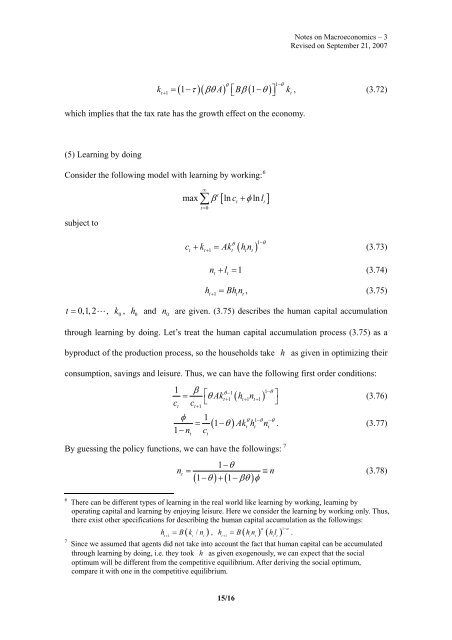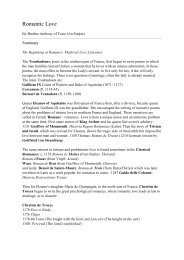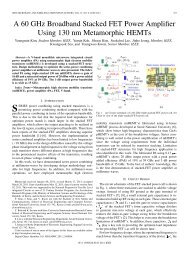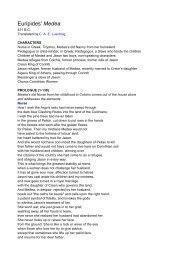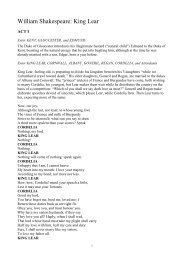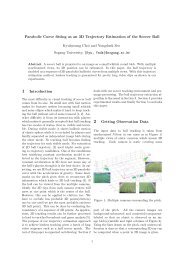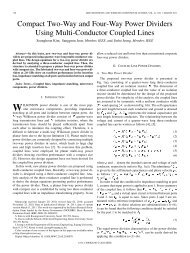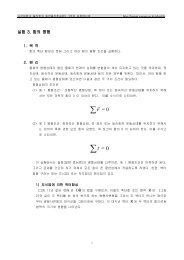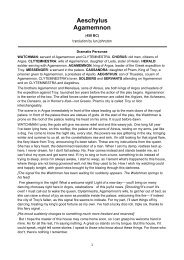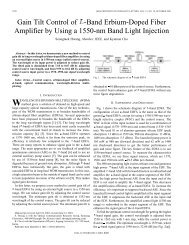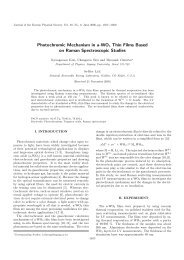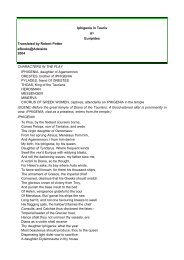Endogenous Growth Model
Endogenous Growth Model
Endogenous Growth Model
You also want an ePaper? Increase the reach of your titles
YUMPU automatically turns print PDFs into web optimized ePapers that Google loves.
Notes on Macroeconomics – 3Revised on September 21, 2007θ( )( ) ( ) 1k = 11 − tτ βθA ⎡+ ⎣Bβ 1 − θ ⎤ ⎦ kt, (3.72)which implies that the tax rate has the growth effect on the economy.−θ(5) Learning by doingConsider the following model with learning by working: 6subject to∞∑t=0[ c + φ l ]tmax β ln lnt( ) 1θ −θt t+1 t t ttc + k = Ak hn(3.73)hn + l = 1(3.74)tt+ 1 t tt= Bhn, (3.75)t = 0,1, 2, , and n are given. (3.75) describes the human capital accumulationk0h00through learning by doing. Let’s treat the human capital accumulation process (3.75) as abyproduct of the production process, so the households takehas given in optimizing theirconsumption, savings and leisure. Thus, we can have the following first order conditions:1 β 1( ) 1 θθθ −−= ⎡ Akt 1ht 1n⎤+ + t+1ctc ⎣⎦t+1(3.76)φ 1 1( 1θ −θ −θ= −θ) Akt ht nt.1−n c(3.77)By guessing the policy functions, we can have the followings: 7ntt=t1−θ( 1− θ) + ( 1−)α= ( / ), h = B( hn ) ( hl ) 1+ 1 t+ 1t t t t≡ n(3.78)βθ φ6 There can be different types of learning in the real world like learning by working, learning byoperating capital and learning by enjoying leisure. Here we consider the learning by working only. Thus,there exist other specifications for describing the human capital accumulation as the followings:h B k n.t t t7 Since we assumed that agents did not take into account the fact that human capital can be accumulatedthrough learning by doing, i.e. they took h as given exogenously, we can expect that the socialoptimum will be different from the competitive equilibrium. After deriving the social optimum,compare it with one in the competitive equilibrium.−α15/16


